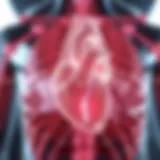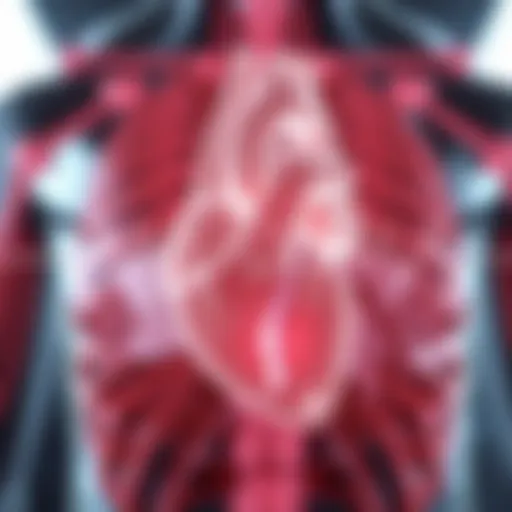Harnessing Trichogramma: The Solution to Clothes Moths
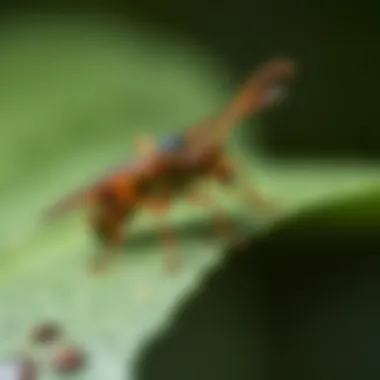
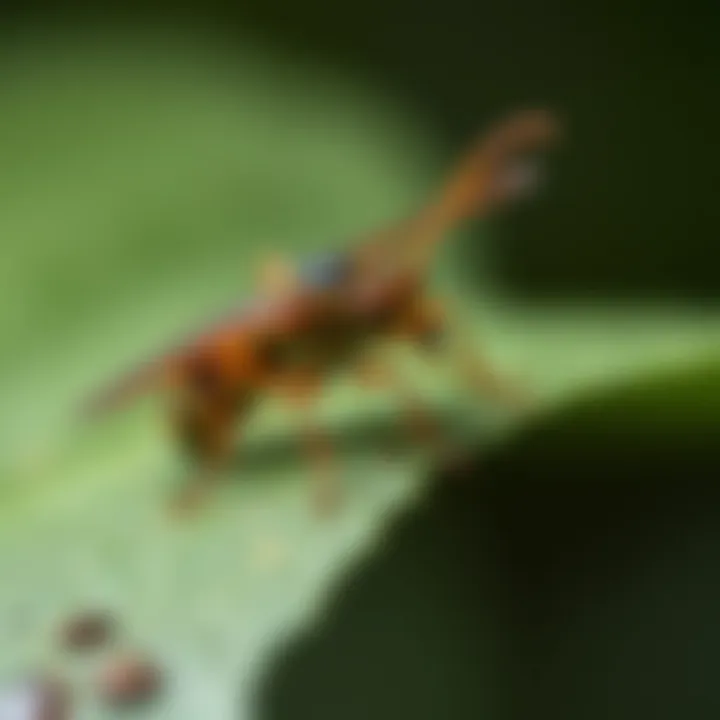
Intro
The world of pest management has evolved considerably over the years, shifting from chemical-heavy approaches to more sustainable, environmentally friendly solutions. One of the stars in this green revolution is the tiny but mighty Trichogramma wasp. Known for its role as a natural enemy of clothes moths, these wasps offer a promising avenue of exploration for researchers and pest control professionals alike.
Understanding Trichogramma and its impact on clothes moths requires us to dive deep into their biology and lifecycle. Clothes moths, notorious for their damage to textiles, can be a significant nuisance. When these pests invade, they can wreak havoc on wardrobes and upholstery, leaving behind unsightly holes and costly repair bills. The invitational relationship between Trichogramma wasps and these moths could represent a turning point in how we approach pest control, turning our attention from synthetic pesticides to biological solutions.
This article seeks to unpack the intricate dynamics between Trichogramma species and clothes moths. We will delve into their biological characteristics, ecological impact, and potential applications in pest management. In a bid to draw connections between nature and sustainable practices, we aim to provide insight into how biological control can stake a claim in the fight against pest infestations. By weaving together scientific findings and practical applications, we hope to shed light on the promising role of these parasitic wasps.
Get ready to explore not just the facts and figures, but also the fascinating lifecycle of both the Trichogramma wasp and the clothes moth. We will identify effective methods for integrating these natural predators into pest management systems, all while keeping a keen eye on how such practices can lead us toward more sustainable futures in pest control.
Prolusion to Trichogramma and Clothes Moths
Understanding the dynamics between Trichogramma wasps and clothes moths sets the stage for exploring sustainable pest management solutions. This relationship sheds light on the vital ecological roles these tiny wasps play, particularly in controlling populations of insects that threaten fabrics and stored goods. By studying Trichogramma, we not only uncover an effective strategy for mitigating moth infestations but also highlight a natural approach that minimizes chemical usage in pest control.
Trichogramma, often dubbed as nature's own pest controllers, are diminutive wasps that lay their eggs within the eggs of other insects, including the notorious clothes moths. This method of biological control is significant; it provides a dual benefit of reducing pest populations while maintaining the integrity of the environment. With clothes moths causing considerable damage to textiles, understanding Trichogramma's function as a natural enemy presents a compelling case for its application.
Defining Trichogramma
Trichogramma is a genus of tiny wasps that belong to the family Trichogrammatidae. Ranging from 0.5 to 1 millimeter in length, these wasps are often overlooked due to their size, but they are powerhouses in the realm of biological pest control. What makes Trichogramma particularly remarkable is their parasitic lifestyle; the female wasps deposit their eggs inside the eggs of host insects, effectively preempting the larvae's development. This predatory behavior doesn’t just curb the rise of pest populations, but it also underscores the wasps' role in maintaining ecological balance.
These wasps thrive in various environments, adapting well to agricultural fields and urban ecosystems alike. Their utility in pest management is widely recognized, as they have been employed in protecting crops from lepidopteran pests, such as moths and butterflies. By integrating Trichogramma into pest management strategies, we can enhance biodiversity and foster more resilient agricultural systems.
Understanding Clothes Moths
Clothes moths, primarily comprising of two species — the common clothes moth (Tineola bisselliella) and the webbing clothes moth (Tinea pellionella) — pose a significant threat to textiles worldwide. Unlike your average pest, these moths are not drawn to food per se but are attracted to the fibers contained in fabrics, particularly those made from natural materials such as wool, silk, and cotton.
Their life cycle includes distinct stages: egg, larva, pupa, and adult. The real damage often occurs during the larval stage, where the growing caterpillars feast on clothing and textiles, leaving behind holes and ruin. This feeding frenzy can be devastating not just to cherished garments but also to the economic value of textile products, inflicting considerable losses in both domestic and commercial spaces.
The ability to effectively combat clothes moths is critical. Relying solely on chemical methods has its downsides, including potential harm to the environment and human health. This is where Trichogramma comes into play as a viable alternative. By understanding the habits and life cycles of clothes moths, we can devise more informed pest management strategies that leverage the natural abilities of Trichogramma wasps.
"By recognizing the complex interplay between Trichogramma and clothes moths, we step towards a more sustainable form of pest management — one that respects both the ecosystem and our fabrics."
In summary, delving into Trichogramma and clothes moths not only informs pest management practices but also champions the significance of ecological balance. With pests continually evolving, integrating Trichogramma could prove instrumental in safeguarding our textiles against these uninvited guests.
Life Cycle of Trichogramma Wasps
The life cycle of Trichogramma wasps is a critical aspect of understanding how they contribute to pest management, particularly against clothes moths. By studying their development stages, one can appreciate the efficiency and effectiveness these tiny wasps have in targeting their hosts' eggs. Trichogramma species are known for their rapid reproduction rates and short life cycles, enabling them to control pest populations more effectively. This section elaborates on the different stages in the life cycle of Trichogramma, revealing how each stage plays a role in their function as natural pest controllers.
Egg Stage
The life of a Trichogramma wasp begins when the female lays her eggs in the eggs of potential host species, such as clothes moths. This parasitic behavior is vital; the female wasp often selects specific moth eggs based on size and species, ensuring that her offspring will have the best chance of survival. An interesting characteristic of this stage is that the wasps use their ovipositors to penetrate the host’s egg shell, making this a delicate yet crucial initial step in the life cycle. The eggs of Trichogramma typically hatch within two to three days, depending on environmental conditions like temperature and humidity.
Larval Stage
After hatching, the Trichogramma larvae embark on a rather unique developmental journey. The larvae are known as endoparasitoids, meaning they live inside the host egg and feed on its contents, effectively destroying it from within. This stage lasts about five days, during which the larvae consume the host's egg matter. This crucial feeding phase not only sustains the larvae but also ensures that the overall moth population diminishes. Their well-timed lifecycle synchronizes with their host’s, allowing them to thrive where the moths are most abundant.
Pupal Stage
Following the larval stage, Trichogramma enter a pupal phase. This period typically lasts for another five to seven days. In this stage, the larvae form a protective casing around themselves and begin the transformation into adult wasps. The pupal stage is critical, as it signifies the wasps' complete metamorphosis. Conditions during this period affect the overall survival and subsequent emergence of adults, making environmental factors significant. After about one week in the pupal stage, the wasps prepare to burst forth into their final form.
Adult Emergence
Once the transformation is complete, adult Trichogramma wasps emerge from their pupal cases ready to mate and continue the cycle. These adults are small, typically no larger than a pinhead, but they exhibit behaviors that show remarkable efficiency in their role as pests’ natural enemies. Mating occurs soon after emergence, and females are poised to lay their eggs within a short span of time, often leading to multiple generations of wasps within a single season.
The sheer speed at which Trichogramma complete their life cycle allows them to adapt quickly to fluctuating pest populations, making them invaluable in sustainable pest control. Their lifecycle not only illustrates their biological prowess but also highlights the potential of integrating these wasps into pest management strategies. As they grow and evolve, their continued presence could provide essential services in ecosystems affected by pests like clothes moths.
Life Cycle of Clothes Moths
Understanding the life cycle of clothes moths is paramount in devising effective control measures, particularly when considering the role of Trichogramma wasps as a natural pest management strategy. The clothes moth, chiefly the Tineola bisselliella, undergoes several stages from egg to adult. Each stage not only presents different vulnerabilities but also impacts how infestations develop and spread. Thus, a thorough grasp of their lifecycle aids in pinpointing critical intervention times, enhancing the efficacy of Trichogramma deployment.
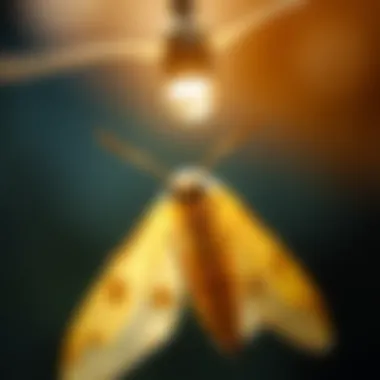
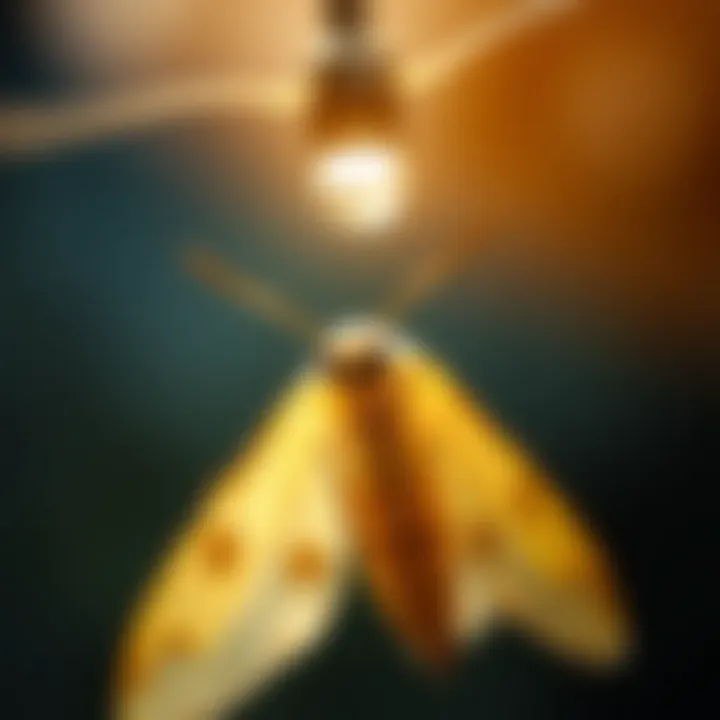
Egg Development
Eggs of the clothes moth are tiny, barely visible to the naked eye—typically measuring around 0.5 mm. These eggs are usually laid in undisturbed places, such as on fabric, wool, or within crevices of closets. Notably, the female moth can lay anywhere from 40 to 300 eggs in one go, depending on environmental conditions. The development period of the eggs varies based on temperature and humidity, taking approximately 4 to 10 days to hatch.
It's crucial to understand this phase since knowing when eggs hatch can assist in timing Trichogramma releases effectively. By targeting the egg stage, one can potentially interrupt the cycle before the larvae become a hassle.
Larval Growth
Once the larvae emerge, they begin a voracious feeding phase that can last several weeks, accounting for 8 to 12 days in ideal conditions. The larvae are responsible for most of the damage, as they feed on animal fibers found in clothing and upholstery. As they munch away, they create holes and damage that can't always be reversed.
The growth occurs through molting, where they might shed their skin as they grow. An interesting point is that larvae are most active at night, preferring the dark. Understanding this behavior allows one to find and target these critters more effectively, making it easier to deploy Trichogramma at the right moments.
Pupation
After the larval stage, the moths enter the pupal stage, which can last from 5 to 30 days. During this period, they seek a safe, dry place to pupate. This stage is critical because it is relatively inactive, yet it is the transition to the adult stage. Environments with fluctuating temperatures can affect the pupation duration.
For biological control enthusiasts, this is where Trichogramma can be exceptionally useful again. By preemptively releasing these wasps, one can disrupt the lifecycle before the adults even emerge—a significant advantage for preventing future infestations.
Adult Stage
Finally, after the pupal stage, adult moths emerge and are noticeably more mobile. Adult clothes moths are small and golden and tend to fly around in search of mates, laying eggs, thus continuing the cycle. It’s at this stage that the moths become a part of the household nuisance, as their presence can quickly lead to large populations.
The lifespan of adult clothes moths is around 2 to 4 weeks, but this is enough time to reproduce extensively. Understanding this phase is important for any pest management strategy. Implementing Trichogramma just before the adult moths are on the move can mitigate potential outbreaks effectively.
"Recognizing the entire lifecycle of clothes moths enables pest control practitioners and households alike to effectively plan and execute management strategies, harnessing the natural predation offered by Trichogramma wasps."
Ecological Role of Trichogramma
The ecological significance of Trichogramma wasps extends well beyond their diminutive size. They play a crucial role as natural adversaries in the battle against crop pests, including the notorious clothes moths. An understanding of their ecological role not only sheds light on their utility in pest management but also highlights their contribution to maintaining biodiversity. By integrating these wasps into pest control strategies, we can pursue sustainable agricultural practices while minimizing chemical usage in our environments.
Natural Pest Control
Utilizing Trichogramma wasps for pest control is akin to inviting nature's own soldiers into our gardens and homes. These tiny wasps are known for their parasitic behavior, specifically targeting the eggs of various pests including clothes moths. When Trichogramma females lay their eggs within the moths’ eggs, the larvae develop inside the host, ultimately leading to the host's demise.
This form of biological control is efficient and environmentally friendly. Some key aspects of their role in pest control include:
- Species Specificity: Trichogramma is selective in its choice of host, often targeting specific pest species without affecting beneficial insects.
- Reproduction Rate: A single female Trichogramma can lay hundreds of eggs in her short lifecycle, quickly suppressing pest populations.
- Chemical-Free Solution: Their use helps reduce reliance on chemical pesticides, protecting not only the environment but beneficial insect populations as well.
"Using Trichogramma is like having nature's hit squad on the payroll—efficient and clean without the collateral damage."
Moreover, studies have shown that these wasps can be especially effective in greenhouse and agricultural environments where pest outbreaks can spiral out of control rapidly. Their ability to adapt to various habitats makes them a promising ally in diversified pest management strategies.
Biodiversity Contribution
In addition to their pest control abilities, Trichogramma wasps contribute significantly to biodiversity preservation. By fostering populations of these wasps, we can support ecosystems that are diverse and resilient. Here’s how they facilitate biodiversity:
- Host Diversity: Trichogramma species can reproduce on various pest species, which allows them to thrive in diverse ecological conditions, leading to a balance among numerous species.
- Interactions with Other Species: Their presence in ecosystems helps maintain population dynamics between pests and beneficial organisms, which can prevent pest outbreaks and maintain healthy habitats.
- Food Source: As part of the food web, Trichogramma serves as prey for other insects and birds, thus contributing to the overall nutritional dynamics within ecosystems.
While the immediate benefits of Trichogramma as pest controllers are evident, the broader ecological implications showcase their value as a foundation for sustaining biodiversity. Promoting the presence of these wasps may not only provide targeted pest management solutions but also contribute to holistic ecological health.
Impact of Clothes Moths on Fabrics
Understanding the impact of clothes moths on fabrics is critical, especially for those who are keen on preserving their textiles and maintaining the integrity of their clothing. These little pests may be small, but their effects on fabrics can be devastating. Not only can they ruin valued garments, but they can also pose challenges for fabric care and pest management strategies. This deeper dive into this topic reveals how significant these pesky insects are in the textile world.
Primary Fabrics Affected
Clothes moths primarily target natural fibers, making some fabrics especially vulnerable. Key materials that fall prey to their destructive feeding habits include:
- Wool: Highly prized for its warmth and durability, wool is one of the moths' favorite snacks. Its fibrous structure provides the perfect environment for larvae to thrive.
- Silk: Another victim, silk's luxurious texture and natural protein composition make it a go-to choice for moths. Damage to silk can be particularly hard to reverse.
- Cashmere: This coveted fiber, known for its softness, is also no match for the larvae’s appetite.
- Cotton: Although it’s a more robust fabric, cotton can still be affected, especially when blended with more vulnerable fibers like wool or silk.
- Felt: Common in crafts and warm clothing, felt can attract moths due to its composition of wool.
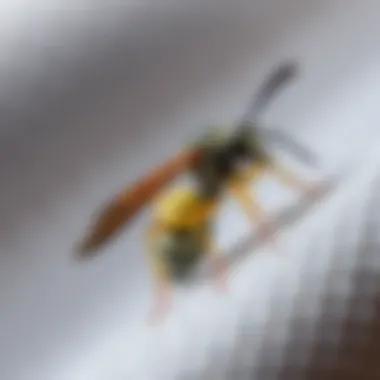
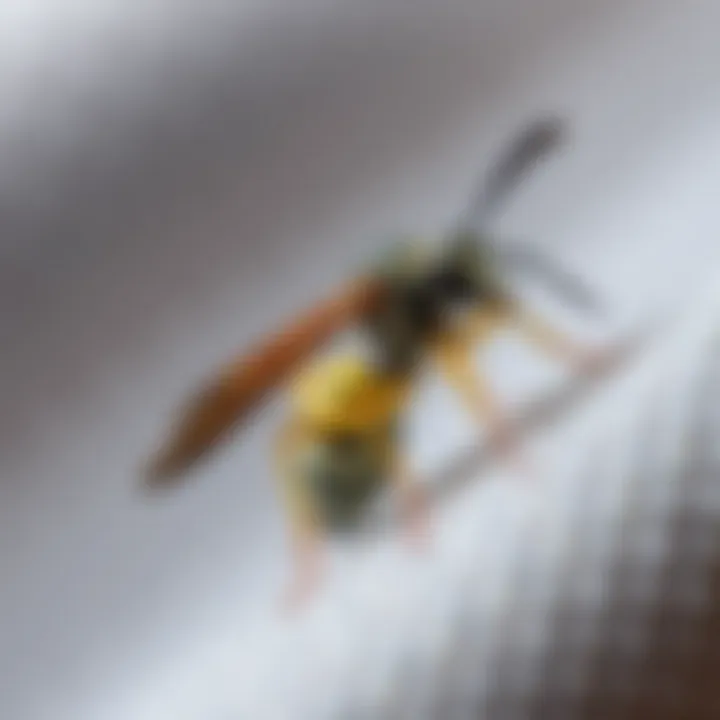
Clothes moths are not particularly choosy; they will utilize any available natural fibers. The damage can be catastrophic for garments and can even extend to furnishings, such as carpets or upholstered items that may contain these materials.
Extent of Damage Caused
The extent of damage caused by clothes moths hinges on several factors, including the species of moth, the type of fabric, and the environment in which the items are stored. Here’s how the damage unfolds:
- Larval Feeding: Moth larvae are responsible for most of the destruction. Their feeding habits can result in holes that render a garment unwearable. This is not just a cosmetic issue; the structural integrity of the fabric can be compromised as well.
- Long-term Effects: Even a small infestation can escalate quickly. What starts as a few larvae can turn into a larger problem if not addressed. Regular inspections and cleaning are often necessary to keep these pests at bay.
- Financial Implications: The financial cost of moth damage can be steep. Losing heritage pieces, designer garments, or family heirlooms can make their destruction particularly painful. Repairing or replacing affected items often requires substantial investment in materials or expert services.
The damage caused by clothes moths can leave textile enthusiasts and everyday consumers in a fix, often leading to significant costs and inconveniences.
To mitigate this problem, awareness and proactive methods of moth prevention are crucial. Being informed about fabrics that are prone to damage and understanding the level of harm larvae can inflict will enhance one’s efforts in protecting these valuable resources.
Utilizing Trichogramma for Pest Management
Utilizing Trichogramma wasps in pest management offers a far-reaching solution for those grappling with the adversities brought by clothes moths. These minuscule heroes have a notable impact on controlling pest populations while promoting ecosystem health. With sustainable practices gaining traction, integrating Trichogramma into pest management regimens supports a shift away from chemical-heavy methods, aligning with contemporary ecological objectives.
Benefits of employing Trichogramma abound. Primarily, they provide natural pest control. As these wasps target the eggs of clothes moths, they significantly reduce the populations before they can cause damage. This not only leads to a healthier indoor environment but also assures that fabrics and textiles remain unharmed. Furthermore, utilizing biological controls like Trichogramma fosters biodiversity, strengthening the balance in many ecosystems.
However, deploying Trichogramma too involves considerations. One must assess the right conditions for effective application, such as the presence of suitable host pests and the habitat's overall health. Awareness of potential environmental challenges plays a crucial role in success, ensuring that these wasps thrive and prosper in their intended ecosystems.
Method of Application
The method of applying Trichogramma involves strategic placement and monitoring of these wasps in environments most affected by clothes moth populations. First and foremost, understanding the various species of Trichogramma and their specific host preferences is essential. Each type may have unique capabilities or behaviors, impacting their effectiveness in pest control.
- Release Rate: It is critical to set an appropriate release rate. Generally, releasing 1,000 to 5,000 wasps per infested area can offer significant control. Adjustments can be made based on the extent of infestation and environmental factors.
- Target Areas: Focus on key areas where clothes moth activity is suspected. This might include closets, attics, or storage rooms where fabrics are commonly stored.
- Monitoring: Regular checks ought to be in place to observe the activity of both the Trichogramma and clothes moth populations. Together with devices like pheromone traps, this monitoring ensures that the balance remains until the moth threat is adequately diminished.
Timing and Seasonal Considerations
Timing stands as a pivotal element in the successful implementation of Trichogramma as a pest management tool. In many regions, clothes moth life cycles align closely with seasonal shifts. Understanding these cycles allows practitioners to effectively schedule the release of Trichogramma at the most impactful moments.
- Spring to Early Summer: This period often marks the peak time for clothes moth egg-laying. Releasing Trichogramma early in the season can intercept moth reproduction before it escalates.
- Environmental Conditions: Aim for days with mild temperatures (between 60°F to 80°F) for optimal wasp activity and survival post-release. Too hot or too cold can severely impact their effectiveness.
Considering the lifecycle dynamics of both Trichogramma and clothes moths enables practitioners to utilize these tiny allies best. Careful observation, coupled with strategic release timing, facilitates a well-rounded approach to pest management that stands to benefit both people and the habitats they occupy.
"Biological control methods represent a shift in pest management strategy toward sustainable practices that are more in harmony with nature."
For further insights, including life cycle details and development patterns, consult resources at Wikipedia and Britannica.
Challenges in Implementing Trichogramma
Implementing Trichogramma as a method for managing clothes moth infestations presents unique challenges and considerations. Though these tiny wasps offer an intriguing alternative to traditional pest control, their integration into existing systems is not without hurdles. It’s essential to understand these obstacles to utilize Trichogramma effectively and maximize their potential benefits for sustainable pest management.
Environmental Factors
The ecological environment isn't always conducive to the survival and effectiveness of Trichogramma. Various environmental elements can significantly impact their performance:
- Temperature and Humidity: These wasps thrive under specific temperature and humidity levels. Too much heat or moisture can hamper their life cycle, while extremes of cold may reduce their population.
- Habitat Compatibility: The presence of alternative hosts can affect Trichogramma's efficiency. If other pest species are present, Trichogramma may divert its efforts away from targeting clothes moths, leading to diminished results.
To address these factors, effective habitat management can play a crucial role in improving the efficiency of Trichogramma in specific environments. It's necessary to ensure that conditions align favorably with their needs for optimal impact against clothes moths.
"The relationship between Trichogramma and environmental factors is a dance of adaptation; each step crucial for success."
Cultural Perceptions
Cultural acceptance is a vital component in harnessing the power of Trichogramma for pest control. Public perception of these wasps may vary widely and can greatly influence their adoption:
- Understanding of Natural Solutions: Some may regard using natural predators as a novel solution, while others could be skeptical. Education on the benefits of biological control methods is required to shift negative perceptions.
- Fear of Wasps: People often have an inherent fear of insects, especially those that resemble typical wasps. This fear can affect decisions on whether to use Trichogramma in homes or businesses.
To overcome these cultural hurdles, targeted outreach efforts can help dispel myths about Trichogramma. Demonstrating their role in a balanced ecosystem and emphasizing safety in their use will be key to gaining acceptance among various demographics.
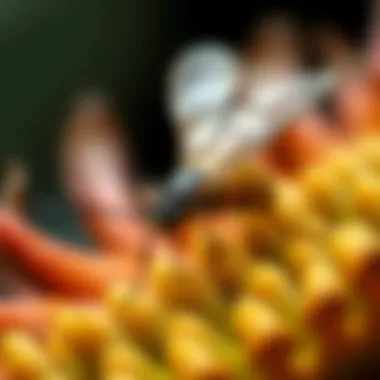
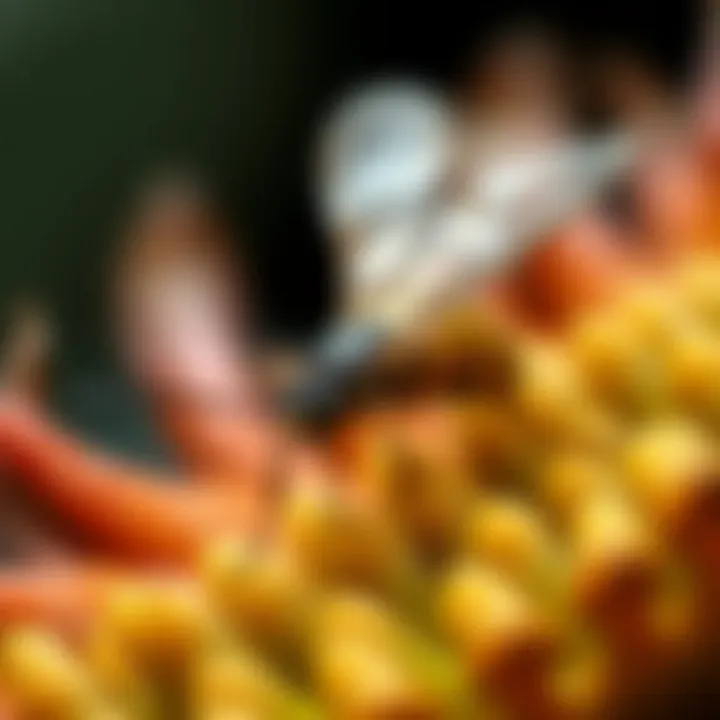
Case Studies in Trichogramma Deployment
The incorporation of Trichogramma wasps in pest management strategies is not just a theoretical concept; real-world applications showcase tangible benefits. Understanding how these small yet mighty wasps have been used in different scenarios provides invaluable insight into their efficacy in combatting clothes moth infestations. Through case studies, we glean the processes, successes, and even setbacks encountered, contributing to a more informed application of these biological controls in various environments.
Success Stories
One notable success story comes from a textile warehouse in North Carolina, where clothes moths posed a significant threat to valuable inventory. The management decided to deploy Trichogramma wasps as a biological control measure. They carefully monitored the moth populations before and after the introduction of the wasps. Within a few weeks, the larvae of the clothes moths began to diminish considerably. This steep decline was attributed to the wasps effectively parasitizing the eggs laid by the moths. By the end of the season, the warehouse reported a staggering 70% reduction in moth larvae, allowing the business to save thousands of dollars in potential fabric damage.
Moreover, an organic farm in California facing persistent moth infestations turned to Trichogramma as part of its eco-friendly pest management approach. The farm integrated the wasps into its crop management scheme. Over two seasons, the farm observed not only a reduction in moth numbers but also an improvement in overall crop health. The synergistic effects yielded by combining Trichogramma deployment with other sustainable practices emphasized the holistic approach to pest control and underscored the adaptability of Trichogramma in various settings.
Lessons Learned
While the aforementioned examples illustrate the potential of Trichogramma, they also reveal essential lessons. One key takeaway from these cases is the importance of monitoring pest populations pre-and post-deployment. In the North Carolina warehouse, the initial assessment allowed for effective calculations regarding the necessary amount of Trichogramma release and aided in identifying suitable timelines for optimal results.
Another lesson focuses on the integration of Trichogramma with existing pest management systems. In California, the organic farm benefited from a multi-faceted approach. Rather than relying solely on Trichogramma, the combination with other natural deterrents revealed increased effectiveness. This suggests that, like a good recipe, the right blend of strategies can lead to the best outcomes.
Lastly, it’s crucial to manage expectations. In both cases, there were fluctuations in Trichogramma effectiveness due to external environmental conditions, such as weather patterns and competing pest species. Flexibility in management approaches and constant assessment can facilitate ongoing success with Trichogramma utilization.
"Evaluating the deployment of biological pest control requires patience and a keen eye for environmental factors. Success is often a mix of the right strategy and perfect timing."
By reflecting on these case studies, it’s evident that while Trichogramma offers promising advantages, practical experiences play a vital role in shaping future strategies. Whether reducing economic losses in a textile setting or promoting sustainable agriculture, the inclusion of these wasps in pest management holds promise, provided the challenges are rightly addressed.
Future Directions for Research
The topic of future directions for research concerning Trichogramma species is pivotal for both enhancing their applications in pest management and ensuring sustainable practices. Recognition of the intricate relationship between these wasps and clothes moths has paved the way for exploration into new methodologies and technologies that could further improve their efficacy. These future studies hold potential benefits that span ecological, agricultural, and even economic domains.
Potential Enhancements in Application
When considering enhancements in the application of Trichogramma for controlling clothes moths, researchers may focus on several key factors:
- Field Trials: More extensive field trials can help discern the optimal conditions under which Trichogramma can thrive and effectively target moth populations. Understanding specific habitats and environmental conditions allows for tailoring their application to maximize impact.
- Integration with Other Controls: Combining Trichogramma with other pest management strategies, such as pheromone traps or biodegradable insecticides, offers promises. This integrated approach may yield better overall pest control and reduce reliance on chemical methods.
- Targeting Specific Moth Species: Research aimed at identifying the precise species of clothes moths prevalent in different regions may enhance the specificity of Trichogramma. This could involve genetically studying the wasps to select strains that have a higher success rate in parasitizing certain moths, thereby improving the success rate of intervention programs.
In testing these enhancements, it will be essential to measure outcomes not only in terms of moth population reduction but also on the ecosystem's health and safety to non-target species.
Genetic Research on Trichogramma
Delving into genetic research brings light to the evolution and adaptability of Trichogramma. Recent advancements in molecular biology provide an unprecedented opportunity to understand the genetic makeup of these wasps, which can significantly affect their behavior and interaction with moths.
- Genetic Traits for Success: By isolating genetic traits that contribute to the parasitic efficacy of Trichogramma, scientists can potentially create strains that are more effective against clothes moths. Understanding the genes responsible for key behaviors, such as egg laying and survival in various conditions, is paramount.
- Biodiversity and Ecosystem Impact: Exploring the genetic diversity within Trichogramma populations may yield insights into how these wasps adapt to changing environments. Such studies provide the broader ecological context necessary for sustainable practices, ensuring that Trichogramma remains a viable pest control option for years to come.
- Transgenic Approaches: Advanced genetic techniques, like CRISPR, could enable the modification of Trichogramma to enhance their defensive mechanisms or reproductive success. However, ethical implications and regulatory concerns would need careful deliberation as they could involve introducing modified organisms into natural ecosystems.
In essence, as research embraces genetic prospects, integrating these discoveries into practical pest management strategies remains key, balancing technological advancements with ecological sensitivity.
*"As we venture deeper into the genetics of Trichogramma, we open doors to innovations that could redefine sustainable pest management as we know it."
As a result, future research avenues not only promise enhanced effectiveness in managing clothes moths but also bolster the pursuit of ecological harmony, making such studies highly relevant for stakeholders from diverse fields.
Concluding Remarks
In wrapping up our exploration of Trichogramma and their substantial role in combating clothes moths, it’s vital to distill the insights garnered through this journey. Understanding the biological interplay between Trichogramma and clothes moths presents a pivotal piece of the puzzle in sustainable pest management. The significance of employing a natural solution such as Trichogramma lies not only in its efficacy but also in its environmental ramifications.
Summary of Findings
Throughout the article, we've delved into various aspects surrounding Trichogramma wasps and clothes moths. The life cycles of both organisms mirror each other in complexity, highlighting the evolutionary strategies that both employ.
- Biological Characteristics: Trichogramma stands out due to their parasitic nature, specifically targeting the eggs of pests, including clothes moths. This method not only thwarts potential infestations but also minimizes reliance on chemical pesticides, promoting a healthier ecological balance.
- Ecological Impacts: Integrating Trichogramma into pest control practices enriches biodiversity and supports natural ecosystems. It showcases a shift towards recognizing beneficial organisms as allies rather than adversaries.
- Sustainable Practices: We observed that coupling natural pest control with traditional methods could yield better outcomes in keeping clothes moths at bay. Consequently, this dual approach enhances the longevity of textiles while preserving environmental integrity.
Considering these findings, it becomes apparent that adopting Trichogramma is not merely a choice but a necessity for sustainable practices moving forward.
Call to Action for Sustainable Practices
As we look ahead, it’s clear that the call for sustainable practices in pest management has never been more pressing. Integrating Trichogramma offers a pathway that not just repels pests but does so while facilitating environmental stewardship. Here are some actionable points to consider:
- Adopt Integrated Pest Management (IPM): Embrace a holistic approach that includes Trichogramma as part of a broader pest management strategy. Educating oneself on IPM can help combine various methods to protect fabrics effectively.
- Promote Research and Awareness: Engage with educational institutions and public resources to further the understanding of Trichogramma, exploring their potential in various fields, from agriculture to domestic settings. Consider visiting USDA or NC State University for more insights.
- Support Conservation Efforts: Participate in or support initiatives aimed at preserving natural habitats for Trichogramma. By fostering environments where these wasps thrive, we contribute to the balance within ecosystems and shield our clothes from moths effectively.
To maintain both our textiles and the environment, let’s champion and advocate for this symbiotic relationship. In advocating Trichogramma as a reliable alternative, we create a ripple effect, paving the way for sustainable futures in pest management.
